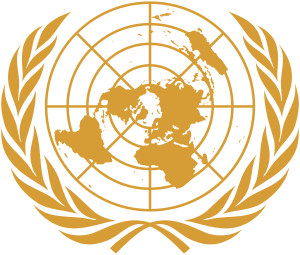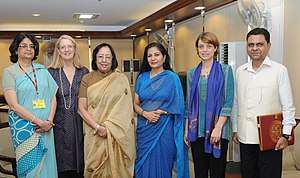United Nations Special Rapporteur on Minority Issues
The post of Special Rapporteur on Minorities has been created as minorities in all regions of the world are exposed to serious threats, discrimination and racism and are often excluded from participation in economic, political and social life. It shall provide for the implementation of the Declaration on the Rights of Members of National or Ethnic, Religious and Linguistic Minorities, taking into account existing international norms and national minority laws.
 | |
 Special Rapporteur | |
| Abbreviation | SRMinorities |
|---|---|
| Type | minority issues |
| Headquarters | Palais des Nations, Geneva |
Head | Hr. Fernand DE VARENNES |
Parent organization | UN Human Rights Council |
| Subsidiaries | Special Rapporteur |
| Rapporteur spécial sur les questions relatives aux minorités | |
The UN mandate
The UN Human Rights Commission created this body on April 21, 2005 by means of a resolution[1] that also defined the mandate. This UN mandate is limited to three years and is regularly renewed. After the UN Human Rights Council was replaced in 2006 by the UN Human Rights Council,[2][3] it is now in charge and exercising oversight. The last extension of the mandate took place on April 6, 2017.[4]
The expert is not a United Nations staff member but is mandated by the UN, and the UN Human Rights Council[5][6] has issued a code of conduct. The independent status of the mandate holder is crucial for the impartial performance of his duties.[7] The term of office of a mandate is limited to a maximum of six years.
He prepares thematic studies and develops guidelines for the improvement of human rights.[8] The Special Representative makes country visits at the invitation of states and can make recommendations in an advisory capacity.[9] He reviews communications and makes proposals to the states on how to remedy any abuses.[10] He also does follow-up procedures in which he reviews the implementation of the recommendations.[11] He compiles annual reports[12] for the attention of the UN Human Rights Council.[13]
References
- "Schaffung und Mandat" (Word). E/CN.4/RES/2005/79. UN-Menschenrechtskommission. 2005-04-21. Retrieved 2019-04-08.
- "UN-Menschenrechtsrat". Menschenrechte durchsetzen. Hrsg: Deutsche Gesellschaft für die Vereinten Nationen e. V. (DGVN). Retrieved 2019-03-24. Der Menschenrechtsrat löste die Menschenrechtskommission ab, die bis 2006 das wichtigste Gremium im Menschenrechtsschutz der Vereinten Nationen gewesen war, sich jedoch zunehmen Kritik an ihrer Effizienz ausgesetzt sah.
- "Entscheid der UN-Generalversammlung den Menschenrechtsrat zu schaffen" (pdf). UN-Res. 60/251. Hrsg: UN-Generalversammlung. 2006-03-15. pp. 1, Pkt. 1. Retrieved 2019-03-24.
- "Mandatsverlängerung" (PDF). A/HRC/RES/34/6. UN-Menschenrechtsrat. 2017-04-06. Retrieved 2019-04-08.
- "Ernennung der Sonderberichterstatter". Hrsg: UN-Menschenrechtsrat. Retrieved 2019-04-05.
- "Sonderverfahren". Menschenrechtsrat. Hrsg: Deutsches Institut für Menschenrechte. Retrieved 2019-04-05.
- "Verhaltenskodex" (Word). A/HRC/RES/5/2. UN-Menschenrechtsrat. 2007-06-18. Retrieved 2019-04-28.
- "Handlungshandbuch" (PDF). UN-Menschenrechtsrat. Retrieved 2019-04-28.
- "Sonderberichterstatter". Hrsg: UN-Menschenrechtsrat. Retrieved 2019-04-05.
- "Länderbesuche". Hrsg: UN-Menschenrechtsrat. Retrieved 2019-04-05.
- "Empfehlungen". Hrsg: UN-Menschenrechtsrat. Retrieved 2019-04-05.
- "Anschlussverfahren". Hrsg: UN-Menschenrechtsrat. Retrieved 2019-04-05.
- "Jahresberichte allgemein". Retrieved 2019-04-05.